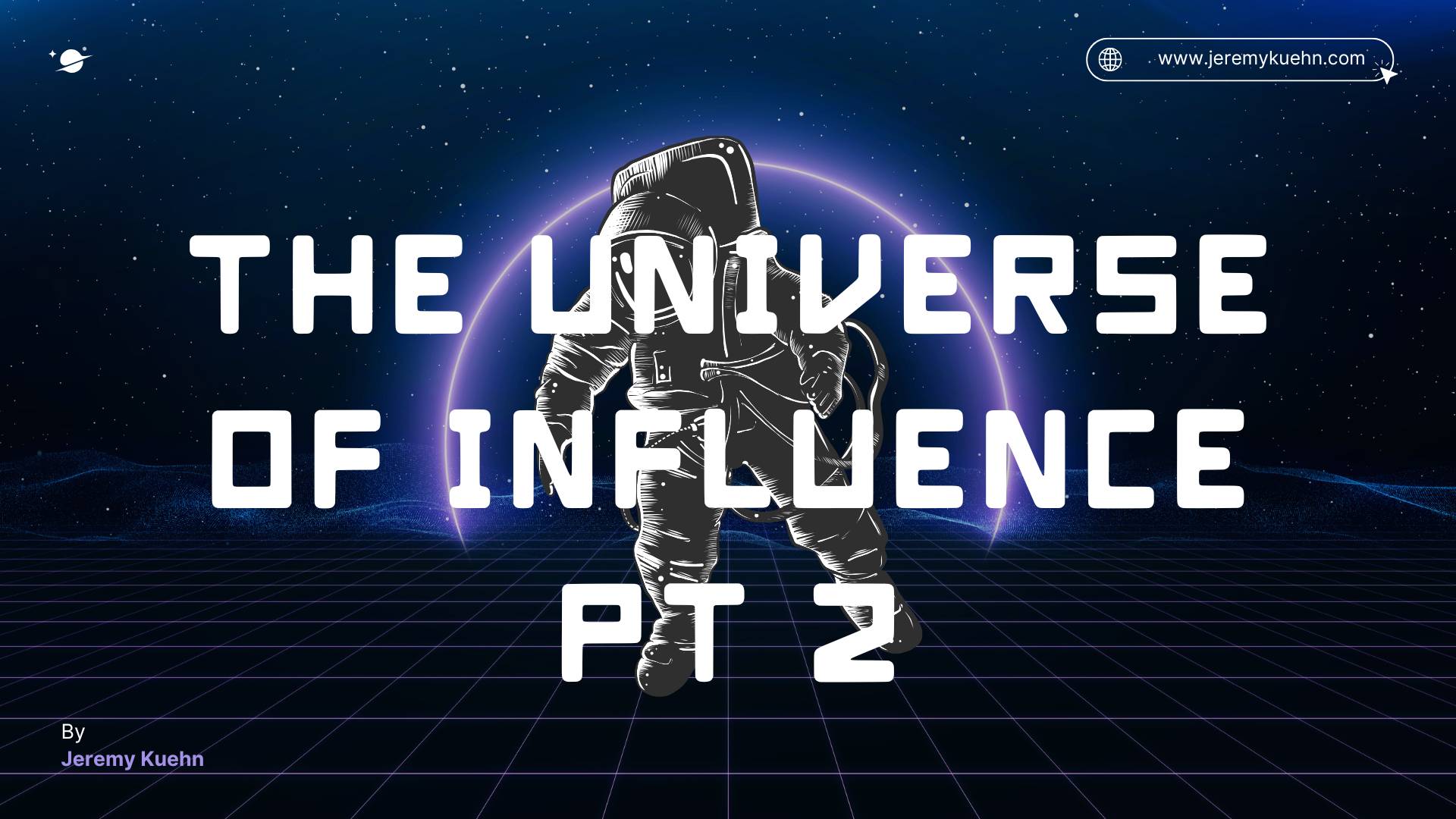
In Part 1 of The Universe of Influence, we explored how momentum works—how volunteers come to life through vision, encouragement, and direction. But every universe, even one filled with motion, has something else too:
Black holes.
In space, a black hole is a region so dense that even light can’t escape its pull. In leadership, black holes are just as real. They show up as mindsets, conversations, and habits that quietly drain energy from your team. Sometimes, you don’t even realize it’s happening—until things slow down or stop altogether.
These black holes aren’t dramatic. They’re subtle. But their impact is massive.
Let’s talk about three of the most common ones I’ve personally experienced—and how to lead your way out of them.
Black Hole #1: “My Job Is Hard”
Let’s be honest: some days, leading feels heavy. You’re navigating expectations, people, systems, emotions—and still trying to smile. It’s easy to slip into the thought:
“This is harder for me than it is for anyone else.”
We don’t always say it out loud, but we feel it. The weight of comparison starts to distort perspective. Suddenly, instead of seeing the potential in our role, we start seeing only the pressure.
But here’s the truth: every leadership role has gravity. Yours isn’t harder. It’s different. And in that difference lies your unique advantage.
Let’s flip the mindset.
Instead of asking, “Why is this so hard?” ask, “What strength does this challenge reveal?”
Try this:
- List 3–5 advantages of your current role or context.
- Think about what makes your influence strategic, even if it feels difficult.
- Use that insight to frame how you encourage and recruit others.
Example:
If you’re leading in a smaller setting, your strength might be relational closeness. You know people’s stories. That’s gold. Use that connection to invite others into mission:
“You’ve seen what this team means to people. You could help multiply that impact.”
Remember: “Hard” doesn’t mean “wrong.” It often means “valuable.”
Black Hole #2: Commiseration
Here’s one that sneaks in with a smile.
You’re talking with another leader or teammate. Things aren’t going well. You both start venting. It feels honest. Real. Maybe even bonding. But then… nothing changes.
Venting can feel productive, but over time it becomes commiseration—the kind of talk that swirls around the problem without ever moving toward a solution.
“I’m just processing.”
“It’s not fair.”
“Other teams have it easier.”
That’s the pull. And if we’re not careful, it becomes the culture.
So how do we lead through it?
We don’t shut it down—but we redirect it.
Try this when you hear discouragement start to spiral:
- Say: “That does sound tough. How can I help?”
- Or: “I’ve felt that way too. What’s one small thing we could change this week?”
Empathy doesn’t mean spiraling with someone. It means offering a hand up.
Application Tip:
At your next team meeting, normalize honesty—but also normalize next steps. Model it.
“I’ve been feeling a little stuck in ________. So here’s what I’m going to try this week…”
Culture is contagious. Be the leader who listens—and then moves.
Black Hole #3: “Tomorrow Will Be Better”
Ah, the lie of leadership optimism.
This one feels like hope, but it’s not. It’s passivity wearing a disguise.
“We’ll figure it out eventually.”
“I’m sure it’ll get better next month.”
“Once things slow down, we’ll focus on it.”
We all need hope. But hope without action is just drift. And as Newton reminded us—nothing changes without a force applied.
The way out? Push gently. Move something. Do one small thing.
Try this today:
- Clean or organize the space your team uses.
- Schedule one conversation you’ve been putting off.
- Write down 2–4 people you could encourage or invite into leadership.
None of those things solve everything—but they create forward motion. And motion creates clarity. Confidence. Momentum.
Hope is the spark. Action is the fuel.
Final Thought: You Can Resist the Pull
Leadership doesn’t get easier. But it can get clearer.
Once you know what to watch for, you can lead with purpose—even when the gravity feels strong. Black holes don’t have to define your culture. You can be the leader who sees them, names them, and moves your team forward anyway.
- When you feel like your role is too hard—look for its hidden strengths.
- When you’re tempted to vent—choose empathy and movement.
- When you feel stuck—act. Even a little. Especially a little.
Because you’re not just managing a team. You’re building a movement.
The universe of influence around you is full of potential. But it’s not automatic. It requires leadership. And you—right where you are—have the force to set it in motion.
Thanks for reading Part 2 of this series. If this encouraged or challenged you, share it with another leader in your orbit. The best teams don’t just move—they move together.